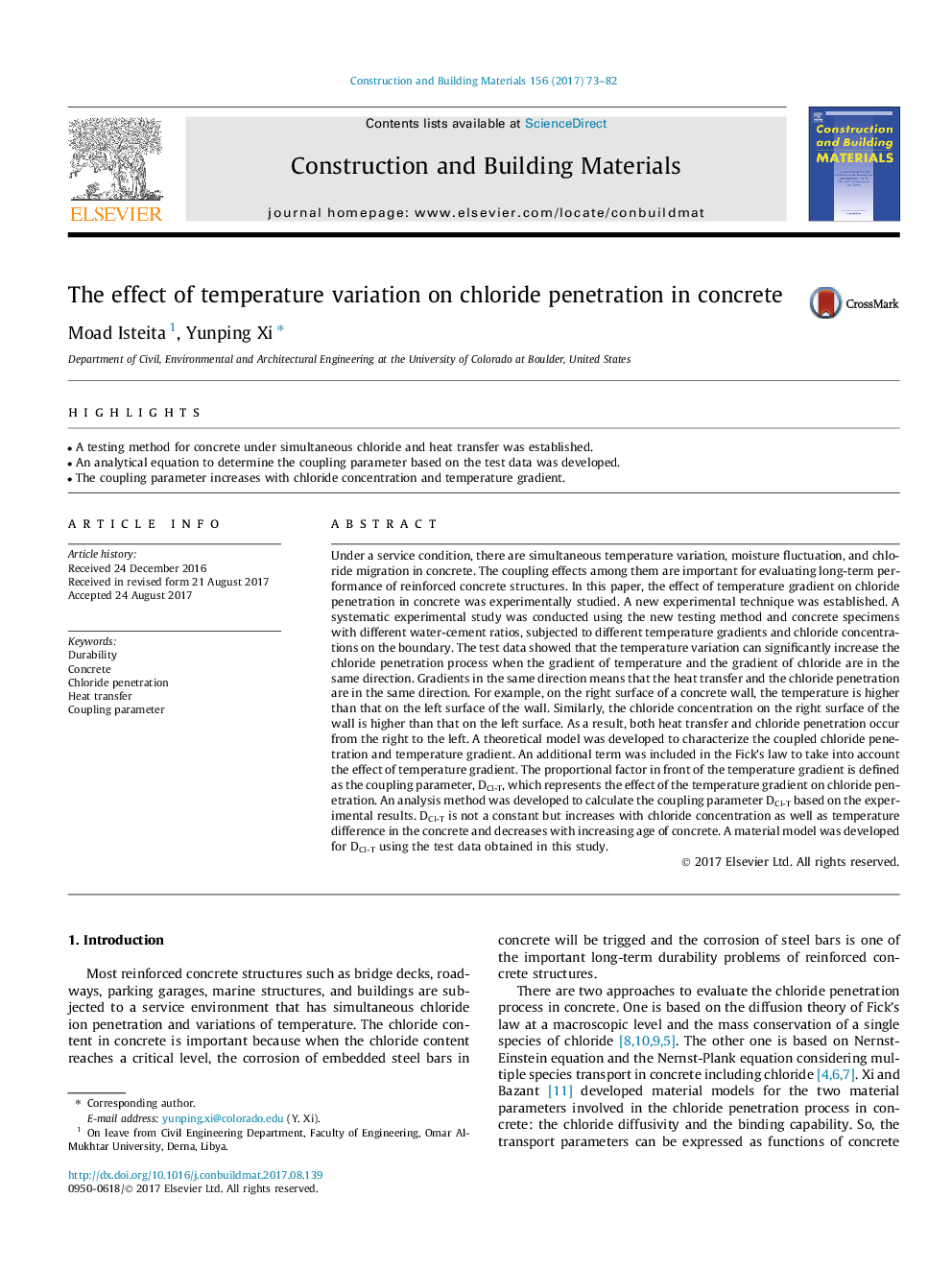| Article ID | Journal | Published Year | Pages | File Type |
|---|---|---|---|---|
| 4912648 | Construction and Building Materials | 2017 | 10 Pages |
Abstract
Under a service condition, there are simultaneous temperature variation, moisture fluctuation, and chloride migration in concrete. The coupling effects among them are important for evaluating long-term performance of reinforced concrete structures. In this paper, the effect of temperature gradient on chloride penetration in concrete was experimentally studied. A new experimental technique was established. A systematic experimental study was conducted using the new testing method and concrete specimens with different water-cement ratios, subjected to different temperature gradients and chloride concentrations on the boundary. The test data showed that the temperature variation can significantly increase the chloride penetration process when the gradient of temperature and the gradient of chloride are in the same direction. Gradients in the same direction means that the heat transfer and the chloride penetration are in the same direction. For example, on the right surface of a concrete wall, the temperature is higher than that on the left surface of the wall. Similarly, the chloride concentration on the right surface of the wall is higher than that on the left surface. As a result, both heat transfer and chloride penetration occur from the right to the left. A theoretical model was developed to characterize the coupled chloride penetration and temperature gradient. An additional term was included in the Fick's law to take into account the effect of temperature gradient. The proportional factor in front of the temperature gradient is defined as the coupling parameter, DCl-T, which represents the effect of the temperature gradient on chloride penetration. An analysis method was developed to calculate the coupling parameter DCl-T based on the experimental results. DCl-T is not a constant but increases with chloride concentration as well as temperature difference in the concrete and decreases with increasing age of concrete. A material model was developed for DCl-T using the test data obtained in this study.
Related Topics
Physical Sciences and Engineering
Engineering
Civil and Structural Engineering
Authors
Moad Isteita, Yunping Xi,
